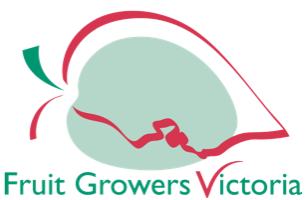

The Draft Tree Standard is available for comment
So why do we need a Size Index? For a Standard to work it needs measurables. It can act as a guideline, but essentially looks to establish a particular level of service or product excellence. Abiding by the parameters of the size index will majorly improve the survivability of stock in landscapes, particularly with material involved in street plantings that is supplied in containers and bags.
Based loosely on rootball:shoot ratio studies carried out by Ross Clarke for the development of NATSPEC, but refined based on current techniques and production practices, the index aims to assess the suitability of the size of the tree (height x calliper) to the container it is supplied in. Supplying stock that is sufficiently locked in its pot is the desired outcome and the index aims to provide the range believed acceptable for this outcome.
So what about stock supplied outside the range? The implications here are obvious. Material either underdone or overcooked will be more likely to fail in the landscape. If you are unsure, the standard advises of production and despatch sampling where the specimen is selected from the batch, its container removed and roots washed to view root growth. The aim here is to ensure that the specimen hasn’t outgrown its container or been dug ex ground with too small a rootball to support itself adequately. Determining this balance becomes particularly important in material greater than 20 litres and supporting production and despatch testing will verify this if warranted.
Meeting the standard is really only one step to assuring the quality, performance and longevity of the specimen in the landscape. Other critical elements that play an important part is the source of junior material and good genetic selection, appropriate root development, pruning and management during the formative stages of development, the use of good quality potting mixes, and sustainable weed, pest and disease management practices under accreditation schemes such as NIASA.
Remember too that there are some exemptions to the index - trees that just won’t fall into the range due to their unique attributes and characteristics such as:
- Brachychiton rupestris (characteristically large trunk)
- Callistemon viminalis ‘Hanna Ray’ (doesn’t grow tall for size of pot supplied in)
- Eucalypus caesia (grows naturally tall and thin)
If these trees have been grown in a quality way with due consideration given to selection and process, success would still be expected.
It is really important to have this discussion with your grower so variations can be explained. This way, signs of material that shouldn’t be supplied in the container it is in will become more evident. So the index won’t cover everything but you need to know when it should apply. An explanation as to a particular tree’s growth pattern effectively deals with any issue of non-compliance and if anything, enhances the valuable relationship required between the purchaser and the grower going forward. This is all positive and good for the buyer, grower and a plus for stock quality.

Brachychiton rupestis

Callistemon viminalis 'Hanna Ray'

Eucalyptus caesia
Receive all the latest news, product information, collections, projects, tips and special offers straight to your inbox each month or so.
Receive all the latest news, product information, collections, projects, tips and special offers straight to your inbox each month or so.
Treefinder can help you identify the perfect tree for your next project!
With over 400 tree varieties for review, the Treefinder app enables you to conveniently browse and compile a list of trees suitable for a number of common landscaping uses - from attracting birds to creating a formal screen or hedge. By selecting desired size, foliage, and a few categories, Treefinder opens up a world of possibilities.
Once you've found the perfect tree you can click through to our website for more information, availability and a quote.

We are specialists in the environmentally sustainable production of premium quality advanced landscaping trees and screens.
For more than 49 years Speciality Trees has been a leader in the production and supply of advanced environmentally sustainable, containerised landscape trees for local government, the landscaping industry and retailers.
Learn more







